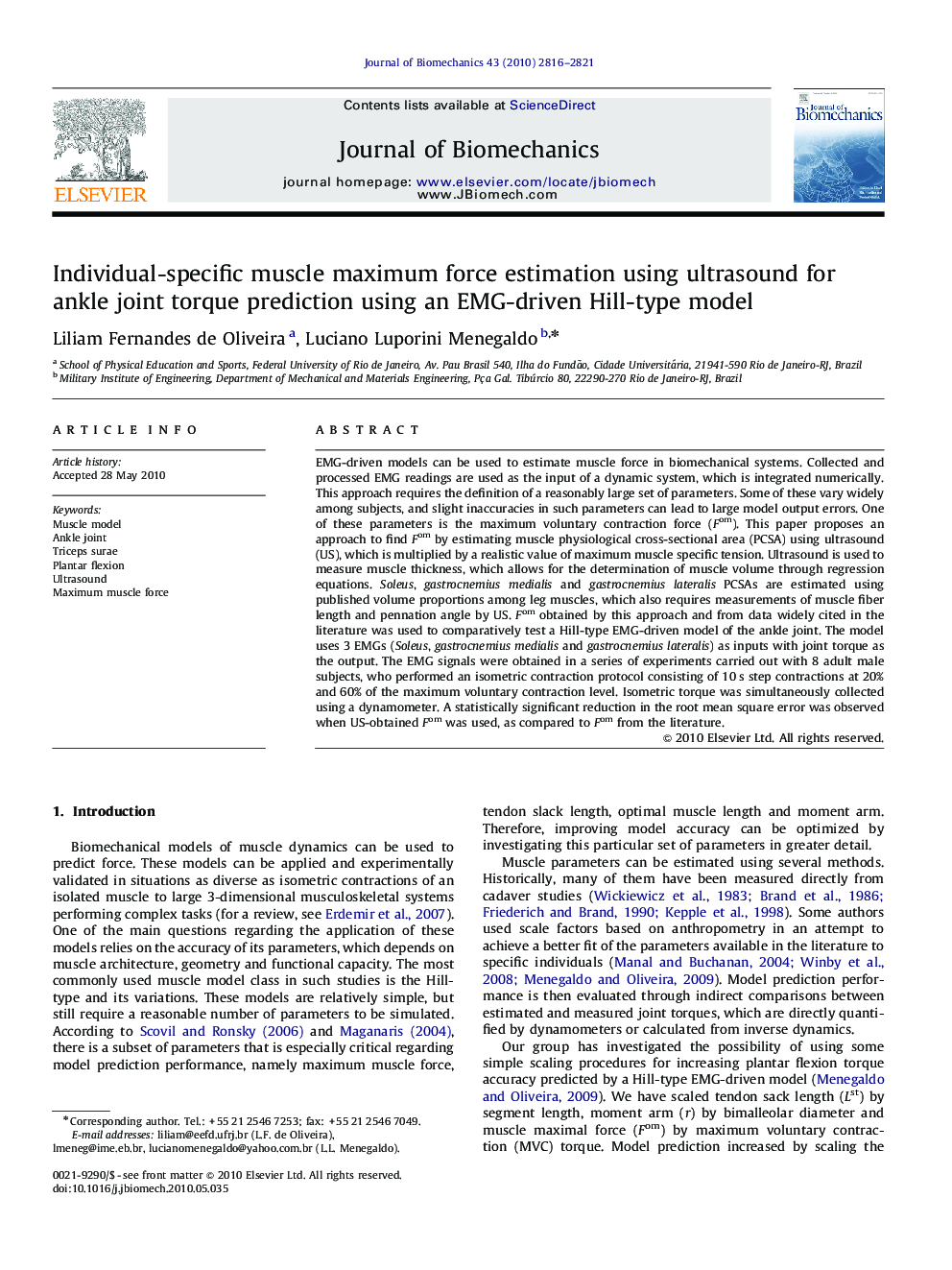| کد مقاله | کد نشریه | سال انتشار | مقاله انگلیسی | نسخه تمام متن |
|---|---|---|---|---|
| 872603 | 910271 | 2010 | 6 صفحه PDF | دانلود رایگان |

EMG-driven models can be used to estimate muscle force in biomechanical systems. Collected and processed EMG readings are used as the input of a dynamic system, which is integrated numerically. This approach requires the definition of a reasonably large set of parameters. Some of these vary widely among subjects, and slight inaccuracies in such parameters can lead to large model output errors. One of these parameters is the maximum voluntary contraction force (Fom). This paper proposes an approach to find Fom by estimating muscle physiological cross-sectional area (PCSA) using ultrasound (US), which is multiplied by a realistic value of maximum muscle specific tension. Ultrasound is used to measure muscle thickness, which allows for the determination of muscle volume through regression equations. Soleus, gastrocnemius medialis and gastrocnemius lateralis PCSAs are estimated using published volume proportions among leg muscles, which also requires measurements of muscle fiber length and pennation angle by US. Fom obtained by this approach and from data widely cited in the literature was used to comparatively test a Hill-type EMG-driven model of the ankle joint. The model uses 3 EMGs (Soleus, gastrocnemius medialis and gastrocnemius lateralis) as inputs with joint torque as the output. The EMG signals were obtained in a series of experiments carried out with 8 adult male subjects, who performed an isometric contraction protocol consisting of 10 s step contractions at 20% and 60% of the maximum voluntary contraction level. Isometric torque was simultaneously collected using a dynamometer. A statistically significant reduction in the root mean square error was observed when US-obtained Fom was used, as compared to Fom from the literature.
Journal: Journal of Biomechanics - Volume 43, Issue 14, 19 October 2010, Pages 2816–2821